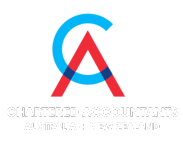Struggling accounting firms often face a common sequence of challenges, typically unfolding as follows:
To remain competitive in such an environment, the primary strategy available is to reduce prices. However, this prompts competitors to lower their prices further, leading you to reduce yours again. This downward price spiral necessitates acquiring more low-value clients, which not only consumes additional time but also incrementally increases your workload merely to maintain breakeven.
For this approach to be viable, an extensive marketing presence is required—essentially transforming your firm into the accounting industry’s equivalent of McDonald’s. This scenario is unlikely for small or medium-sized firms.
If your firm finds itself overwhelmed with hours of work without reaping the benefits allowing for expansion, it is likely that your services are underpriced. The objective should not be increased busyness; rather it should focus on maximising revenue within the current working hours.
Standing out and charging more
The initial question to ponder is whether it is worthwhile to retain low-value clients. These clients often consume significant amounts of time for tasks that generate minimal revenue. Establishing a minimum fee for your least remunerative service, based on a flat rate rather than an hourly charge, becomes imperative. This strategy is not intended to alienate low-paying clients but to assert the intrinsic value of your professional time.
Consider this perspective: when engaged with a low-paying client’s project, you are not only earning less but also forfeiting potential opportunities with higher-value clients. Consequently, this could result in an overall financial loss and inefficient use of resources.
Stop charging per hour
Your clients engage your services for the value and expertise you provide, not for a specific allotment of your work hours. It is crucial to acknowledge that clients greatly appreciate knowing upfront the total cost they will incur. Consider this scenario at an auto repair shop: Would you prefer being told, “That’ll be $75,” or hearing, “It will be $25 per hour”? When asked how long the repair might take, perhaps met with a nonchalant shrug? Hours later, you return to find not only incomplete repairs but also unnecessary adjustments made and additional charges for unrequested parts.
Therefore, as a primary rule—establish fixed pricing structures. Ensure these rates are both fair to your client and reflective of the true value of your service.
Get paid up front
At some point, it became acceptable in the accounting industry to permit clients to purchase services on credit. This practice is rare in other service industries; while certain sectors may require a partial upfront payment with the balance due upon completion (such as roofing services), few provide their entire suite of offerings without guaranteed immediate compensation.
It is important to recognize that extending credit is not an obligation. You are operating a business, and your time and resources should be managed effectively. For instance, time spent working on Client A’s tax returns could alternatively be allocated to conducting monthly business analysis for Client B.
When Client A persistently delays payment with repeated promises of future settlement, you face several challenges: you’re unable to reinvest those funds into expanding your firm, you’re spending valuable time chasing overdue payments, and you miss out on billable hours that could have been devoted to other clients like Client B.
Insist on receiving payment up front. Convert what you are owed into an asset immediately. Utilise these assets proactively—a principle you likely advocate for your own clients. Avoid unnecessary delays by ensuring timely payments and reduce the effort spent pursuing outstanding dues.
Ignore market share
Attempting to target a broad audience is ill-advised. Firstly, as previously mentioned, such an approach necessitates significant marketing expenditure. Secondly, for small to medium-sized enterprises, it’s unrealistic to expect compliance with regulations governing 40% of the market, let alone larger portions.
Emphasising sheer numbers can also lead you into detrimental price wars. Instead, it’s far more strategic and sustainable to prioritise quality over quantity by focusing on high-value A-list clients rather than low-value high-volume D-list clients.
Increase the right prices
To maximise client value, it is essential to guide them towards service packages that provide substantial benefits without requiring extensive additional work on your part.
Consider the common practice of offering tiered sales packages—typically categorised as bronze, silver, and gold. Each successive tier presents an increasing number of services or value-added features.
Frequently, these tiers include a “best value” option. This designation might apply to the most expensive package—the gold option—or alternatively, to the mid-tier silver package. The latter often strikes a balance by delivering more essential services and added value than the basic bronze option while remaining significantly more affordable than the gold package.
This approach is not an oversight; it is a strategic effort to guide you toward the silver package, which positions you as a more profitable customer or client for the business. Essentially, while you pay more than for the bronze package, your requirements fall short of those necessitated by the gold tier. This makes services within the silver tier highly advantageous to the company.
As an experiment, consider designing equivalent bronze, silver, and gold packages tailored to a specific niche clientele. Determine what offering in your ideal silver tier would provide substantial value to your clients while simultaneously maximising your revenue without necessitating significant additional work.
Be the first to set your price
In the accounting sector, the opportunity to establish the initial price for a particular service or set of services is uncommon due to high competition. However, should your firm target an underserved niche market, you are presented with a valuable chance to define the pricing expectations for clients within that niche. By setting this standard, you will create a benchmark that others may attempt to undercut; nonetheless, your pioneering status will confer lasting authority and influence.
The adage “time is money” holds true—cease undervaluing your efforts. Focus on selling specialised services rather than allocating portions of your day. This approach not only enhances profitability but also optimises productivity. Your firm merits greater recognition and compensation for its contributions.




